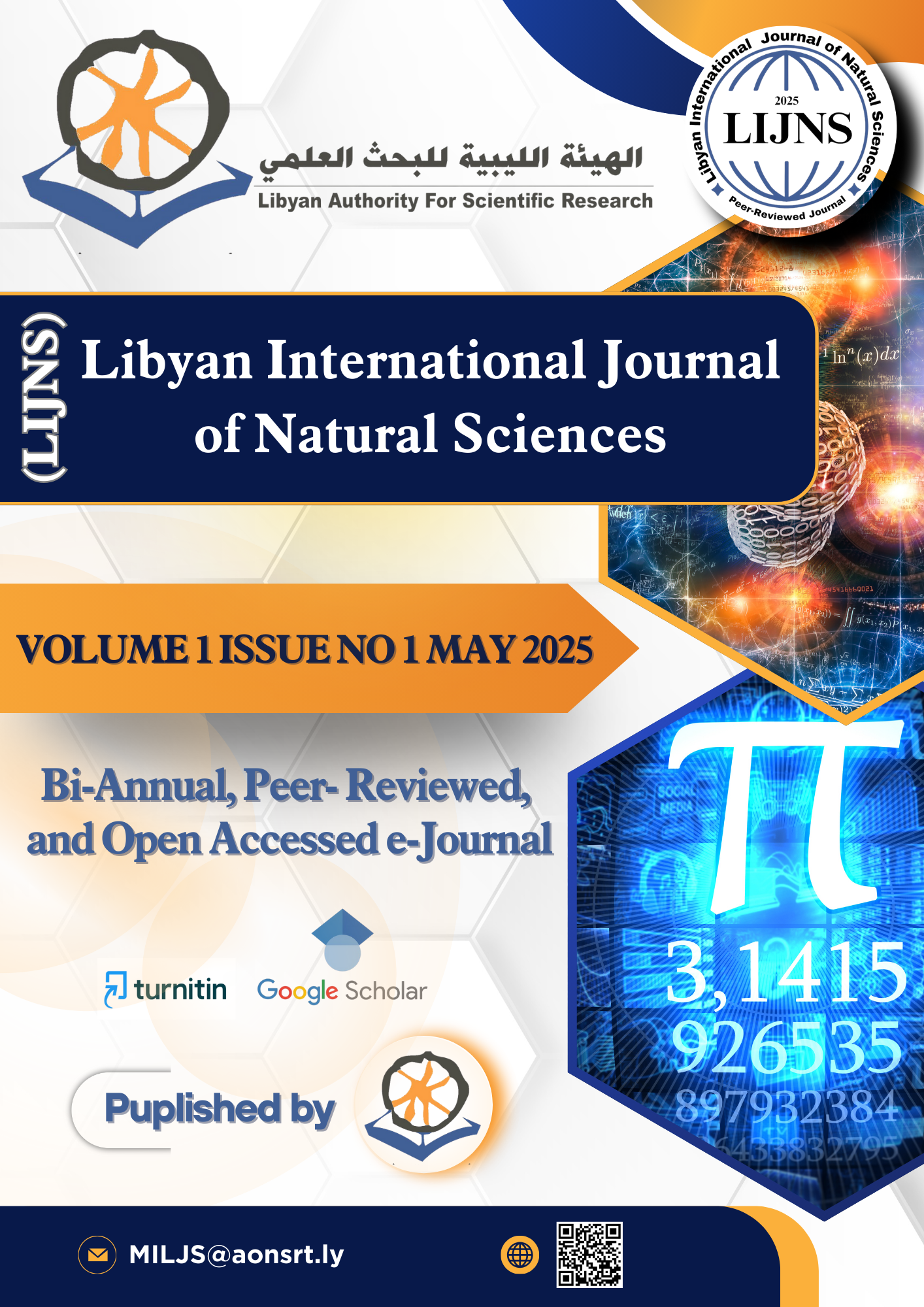Influence of Thermal Treatment on the Structural and Morphological Properties of Intrinsic and CuO:Al Doped Nanoparticles
Abstract
In this work, pure and Al-doped CuO nanocrystalline material is prepared employing the Sol-Gel method. The pure and doped samples are heated to temperatures up to 600°C. The effect of thermal treatment on both structural and morphological properties is investigated. The structural properties are studied using the XRD technique. The results show that the pure and Al-doped CuO powders have a monoclinic structure with two preferred orientations, (002) and (200). The analysis indicates a slight shift of the prevailing crystallization peaks towards higher diffraction angles due to the doping effect and the thermal treatment. It also shows that peak intensity increases with Al doping. Additionally, the impact of heat treatment on both pure CuO and CuO/Al on crystallite size, inter-planar distance, and dislocation density is further investigated. The surface morphology is investigated using the AFM technique. AFM images have shown the formation of interesting organized nanoparticles for the first time; their shape changes from semi-spherical to oval to cylindrical rods within the nanoscale dimensions. Moreover, the intrinsic nanorods are converted to nanotubes by thermal oxidation at ambient air conditions. Therefore, this study confirms the simplicity of converting metal oxide nanorods to nanotubes through thermal oxidation under ambient air conditions.
References
[1] M. Lai, S. Mubeen, N. Chartuprayoon, A. Mulchandani, M. A. Deshusses and N. V. Myung, Synthesis of Sn doped CuO nanotubes from core–shell Cu/SnO2 nanowires by the Kirkendall effect, J. Nanotechnol. 21(29), (2010) 295601. https://doi.org/10.1088/0957-4484/21/29/295601.
[2] F. Bayansal, Y. Gülen, B. Şahin, S. Kahraman and H. A. Çetinkara, CuO nanostructures grown by the SILAR method: influence of Pb-doping on the morphological, structural and optical properties. J Alloys & Compounds. 619 (2015) 378–382. https://doi.org/10. 1016/j.jallcom.2014.09.085.
[3] S. Saleem, A. Khalid, Z. M. Aldhafeeri, A. Thamer, A. Arshad, M. AbdulJabbar, Y. Begum and G. Kandasamy, A comparative analysis of optical and electrical properties of pure CuO and Zn doped CuO nanoparticles for optoelectronic device applications. J Sol-Gel Sci Technol. 113 (2025) 213–224. https://doi.org/10.1007/s10971-024-06591-71
[4] M. Arfana, D. N. Siddiquia, T. Shahidb, Z. Iqbala, Y. Majeeda, I. Akrama, Noreena, R. Bagherib, Z. Song and A. Zeb, Tailoring of nanostructures: Al doped CuO synthesized by composite hydroxide-mediated approach, Results in Physics, 13(2019), 102187. https://doi.org/10.1016/j.rinp.2019.102187
[5] R. M. Mohamed, F. A. Harraz and A. Shawky, CuO nanobelts synthesized by a template-free hydrothermal approach with optical and magnetic characteristics. Ceram Int. 40 (2014) 2127-2133. https://doi.org/10.1016/j.ceramint.2013.07.129
[6] M. Ponnar, C. Thangamani, P. Monisha, S. S. Gomathi and K. Pushpanathan, Influence of Ce doping on CuO nanoparticles synthesized by microwave irradiation method. Appl Surf Sci. 449 (2018)132–143. https://doi.org/10.1016/j.apsusc.2018.01.126
[7] H. Mersian, M. Alizadeh and N. Hadi, Synthesis of zirconium doped copper oxide (CuO) nanoparticles by the Pechini route and investigation of their structural and antibacterial properties. Ceram Int. 44 (2018) 20399–20408. https://doi.org/10.1177/ 1847980418761775
[8] C. Thangamani, M. Ponnar, P. Priyadharshini, P. Monisha, S. Gomathi and K. Pushpanathan, Magnetic behavior of Ni-doped CuO nanoparticles synthesized by microwave radiation method. Surf. Rev. Lett. 26 (2018) 1-11. https://doi.org/10.1142/ s0218625x18501846.
[9] P. M. Shafi and A. C. Bose, Impact of crystalline defects and size on X-ray line broadening: A phenomenological approach for tetragonal SnO2 nanocrystals. AIP Adv. 5 (2015) 057137
https://doi.org/10.1016/j.colsurfa.2016.03.022.
[10] K. Khashan, J. A. Saimon and A. A. Hassan, Optical Properties of CuO Thin Films with Different Concentration by Spray Pyrolysis Method, Eng. and Tech. J, 32(2014) 86-93
[11] G. Abdulnabi and A. M. Juda, Preparation and characterization of (CuO/TiO2/α-Fe2O3) ternary nanocomposite and application in a solar cell, J. Kufa Physics. 1(2023) 1-13. https://doi.org/10.31257/2018/JKP/2023/1501
[12] M. Yousefi and C. Karami, The synthesis of CuO nanoparticles and investigating its effect at different temperature, Advances in Environmental Biology, (2014). 2113-2117.
[13] R. S. Mohammed, K. A. Aadim, K. A. Ahmed, Synthesis of CuO/ZnO and MgO/ZnO core/shell nanoparticles with plasma jets and study of their structural and optical properties, Karbala Int. J. Mod. Sci. 8 (2022) 88e97, https://doi. org/10.33640/2405-609X.3225.
[14] A. A. El Mel, R. Nakamura, C. Bittencourt, The Kirkendall effect and nanoscience: hollow nanospheres and nanotubes, J. Nanotechnol. 2015, 6, 1348–1361. https://doi.org/10.3762/bjnano.6.139

Downloads
Published
How to Cite
Issue
Section
License
Copyright (c) 2025 Libyan Authority for Scientific Research

This work is licensed under a Creative Commons Attribution-NonCommercial-ShareAlike 4.0 International License.





 Published by:
Published by: 